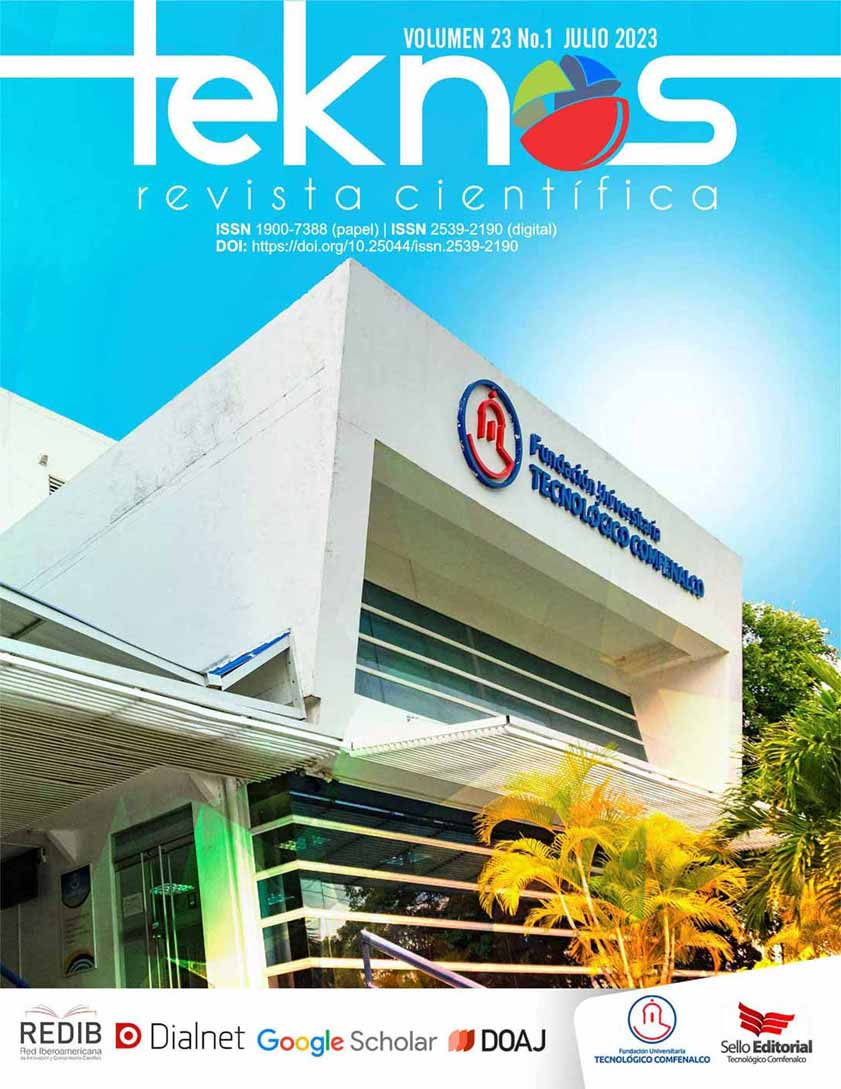Use of IR technology for characterization of high-density polypropylene and polyethylene mixture for post-consumer materials
DOI:
https://doi.org/10.25044/25392190.1065Keywords:
quantification , calibration curve , High Density Polyethylene (HDPE) , Polypropylene mixturesAbstract
In this work, the construction of a calibration curve is carried out to quantify the content of HDPE in mixtures with polypropylene. The analyzes were carried out in a Fourier Transform infrared spectrophotometer model: Spectrum Two S/N: C115753. First, the spectra of polypropylene and high-density polyethylene were analyzed to identify the quantification bands of the components. Once the quantification bands were identified, PE and PP mixtures were made using a pigment dispersing equipment (DRAIS), in concentrations from 10% to 100% in 10% intervals, taking 3 replicates for each concentration. Two calibration curves were built, the first with concentrations between 10 and 50% HDPE and the second with concentrations between 50 and 100% HDPE. The analysis of the results showed that for the curve between 10 and 50% of HDPE a correlation of 0.9744 was obtained, the samples with the highest deviation were at a concentration of 10% with ∆ = 8.4% average. On the other hand, for the curve built in the interval from 50% to 100% HDPE, a correlation of 0.9989 was obtained, obtaining a graph with good linearity, therefore, for this second analysis, a better prediction was obtained between the theoretical and experimental values.
Downloads
References
Araújo, J. R.; Waldman, W. R.; De Paoli, M. A. (2008). Thermal properties of high density polyethylene composites with natural fibres: Coupling agent effect. Polymer Degradation and Stability, 93 (10): 1770-1775.
Askeland, Donald R. (2016). The science and engineering of materials. Wendelin J. Wright (7 edición). Boston, MA. 594.
Branz, Ltd. Suitable pipes that must not contaminate water (en en-NZ). Consultado el 17 de marzo de 2023.
Bueno, S. Trenchless Technology Magazine, PVC vs HDPE: Pros, Cons and Benefits of Each. Septiembre 28 de 2011.
Bell, R. J. Introductory Fourier Transform Spectroscopy. New York: Academic Press, 1972.
Castella, S. P.; Onorato, M. F (2022). Desarrollo de materiales compuestos basados en matrices termoplásticas LLDPE/PP y partículas de caucho reciclado devulcanizado. UNMDP - Facultad de Ingeniería - Departamento de Ingeniería en Materiales. http://rinfi.fi.mdp.edu.ar/xmlui/handle/123456789/684.
Capiati, N.J., Porter, R.S (1975). The concept of one polymer composites modelled with high density polyethylene. J Mater Sci. 10, 1671–1677.
Cecon, V. S.; Da Silva, P. F.; Curtzwiler, G. W.; Vorst, K. L (2021). The challenges in recycling post-consumer polyolefins for food contact applications: A review. Resources, Conservation and Recycling. 167,105422.
Compare Materials: HDPE and LDPE. Makeitfrom.com. Retrieved on 2011-12-30.
Clark H. A.; Pleuddemann, E. P (1963). The concept of one polymer composites modelled with high density polyethylene. Mod. Plastics, June 133.
Crystal R. G.; Southern, J. H (1971). Polymer modulus and morphology: the tensile properties of polyethylene. J. Polymer Sci. A2. 9, 1641.
Dermnet.org.nz. Dermnet.org.nz (2011-07-01). Retrieved on 2011-12-30.
Desper, C. R.; Southern, J. H.; Ulrich R. D.; Porter, R. S (1970). Orientation and structure of polyethylene crystallized under the orientation and pressure effects of a pressure capillary viscometer. J. Appl. Phys. 41, 4284.
Edidin, A.A.; Kurtz S.M (2001). Development of validation of the small punch test for UHMWPE used in total joint replacements Funct Biomater, 198, 1-40.
Geyer, R.; Jambeck, J. R.; Law, K. L. “Production, use, and fate of all plastics ever made - Supplementary Information,” Sci. Adv., vol. 3, no. 7, pp. 19–24, 2017.
Jubinville, D.; Esmizadeh, E.; Saikrishnan, S.; Tzoganakis, C.; Mekonnen, T (2020). Sustainable Materials and Technologies 25, e00188
Plastic density in 2 minutes. www.plastic-density.com. Consultado el 18 de junio de 2021.
Puck Board (HDPE Sheets). Professional Plastics. Consultado el 24 de diciembre de 2018.
Sandler, J.; Shaffer, M.S.P.; Prasse, T.; Bauhofer, W.; Schulte, K.; Windle, A.H. Development of a dispersion process for carbon nanotubes in an epoxy matrix and the resulting electrical properties Polymer. 1999, 40, 5967-5971
Shaffer, M.S.P.; Windle A.H (1999). Fabrication and characterization of carbon nanotube/poly (vinyl alcohol) composites Adv Mater, 11, 937-941.
Stahmer, M.; Chairman. The optimum gas pipe material? Polyolefins Technical Information. TN004- TN006.
Sharpe L. H.; Schonhorn, H (1964). Surface energetics, adhesion, and adhesive joints. Amer. Chem. Soc. Adv. Chem. Ser. 43, 189.
Thostenson, E.T.; (2002). Chou Aligned multi-walled carbon nanotube-reinforced composites: processing and mechanical characterization J Phys D: Appl Phys, 35, L77-L80.
Valco Group. Manufacturing process of LDPE-LLPDE-HDPE. Consultado el 18 de marzo de 2023.
Vanderbilt B. M. (1959). Mod. Plastics. The concept of one polymer composites modelled with high density polyethylene. September, 125.
Weeks, N. E. Ph. D. (1974). Thesis, Polymer Science and Engineering, University of Massachusetts.
Zou, Y.; Feng, Y.; Wang, L.; Liu X. (2004). Processing and properties of MWNT/HDPE composites Carbon, 42, 271-277.
Downloads
Published
How to Cite
Issue
Section








